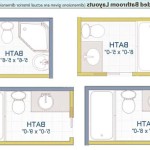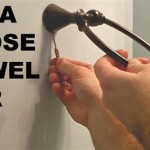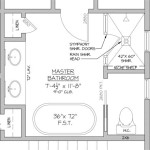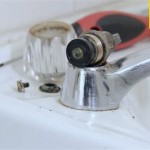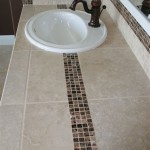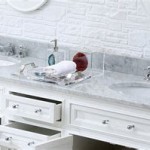How to Repair a Bathroom Sink Plug
A bathroom sink plug is a simple but essential component of bathroom plumbing. It helps to hold water in the sink for various tasks, such as washing hands, brushing teeth, or shaving. However, over time, bathroom sink plugs can become worn out, damaged, or even broken. When this happens, it can be frustrating to use the sink effectively, leading to water splashing and potential leaks. Fortunately, repairing a bathroom sink plug is a relatively simple task that most homeowners can handle themselves. With the right tools and a little patience, you can restore your bathroom sink to its full functionality.
Understanding Bathroom Sink Plug Types
Before attempting any repair, it's crucial to understand the different types of bathroom sink plugs. This will help you identify the specific problem and choose the appropriate repair method. Here are the two most common types:
- Lift-and-Turn Plugs: These are the most common type of bathroom sink plugs. They consist of a circular stopper connected to a lift rod. To operate the plug, you lift the rod to open the drain or push it down to close it.
- Push-Up Plugs: These plugs are typically constructed from a single piece of metal or plastic. They are often used in modern sinks with overflow drains. To operate the plug, you simply push it down to close the drain and lift it up to open it.
Common Bathroom Sink Plug Problems
Once you understand the types of bathroom sink plugs, you can identify the specific problem you're dealing with. Some of the most common issues include:
- Worn-Out Washer: The washer is a small rubber or plastic ring that sits between the plug and the drain. Over time, the washer can wear out, causing leaks. Replacing the washer is a simple fix.
- Broken Lift Rod: In lift-and-turn plugs, the lift rod can break or bend, preventing the plug from operating properly. You may need to replace the entire lift rod or simply straighten the bent portion.
- Clogged Drain: A clogged drain can cause the plug to stick or prevent it from sealing properly. You'll need to clear the drain blockage before addressing the plug issue.
- Damaged Plug: The plug itself may be damaged or broken. This may require replacing the entire plug.
Steps to Repair a Bathroom Sink Plug
Now that you've identified the problem, you can proceed with the appropriate repair. Here's a step-by-step guide to repairing a bathroom sink plug:
Replacing the Washer
1. Turn off the water supply: Locate the shut-off valve for the bathroom sink and turn it off. 2. Remove the plug: If you have a lift-and-turn plug, pull up on the lift rod to remove the plug. For a push-up plug, simply lift it out of the drain. 3. Remove the old washer: The washer is typically located on the underside of the plug. You can use a small screwdriver or pliers to remove it. 4. Install the new washer: Place the new washer over the underside of the plug, ensuring it's properly seated. 5. Reinstall the plug: Place the plug back in the drain and secure it by pushing down or turning the lift rod. 6. Turn on the water supply: Test for leaks by turning the water on and checking for any dripping around the plug.
Repairing or Replacing the Lift Rod
1. Turn off the water supply: Locate the shut-off valve for the bathroom sink and turn it off. 2. Remove the plug: Pull up on the lift rod to remove the plug. 3. Inspect the lift rod: If the rod is broken, you'll need to replace it. If it's bent, you may be able to straighten it with pliers. 4. Replace the lift rod (if necessary): Remove the old lift rod by unscrewing it from the plug. Install the new lift rod by screwing it into the plug. 5. Reinstall the plug: Place the plug back in the drain and secure it by turning the lift rod. 6. Turn on the water supply: Test for leaks by turning the water on and checking for any dripping around the plug.
Clearing a Clogged Drain
1. Use a plunger: Place the plunger over the drain opening and push down firmly. Repeat this motion several times to attempt to clear the blockage. 2. Try a drain snake: If the plunger doesn't work, try using a drain snake. Insert the snake into the drain and twist it to break up the blockage. 3. Use a chemical drain cleaner (as a last resort): Chemical drain cleaners can be effective but can also damage pipes. Read the instructions carefully and use them with caution. 4. Contact a plumber: If all else fails, contact a professional plumber to clear the blockage.
Replacing the Plug
1. Turn off the water supply: Locate the shut-off valve for the bathroom sink and turn it off. 2. Remove the old plug: Pull up on the lift rod to remove the plug (for lift-and-turn plugs) or lift it out of the drain (for push-up plugs). 3. Install the new plug: Place the new plug in the drain and secure it by pushing down or turning the lift rod. 4. Turn on the water supply: Test for leaks by turning the water on and checking for any dripping around the plug.
By following these steps, you can successfully repair a bathroom sink plug and restore the functionality of your bathroom sink. Remember to always check for leaks after making any repairs and seek professional help if you encounter any difficulties or are unsure about any aspect of the process.

How To Replace A Rusty Sink Drain Howtolou Com

How To Fix Or Maintain Your Sink S Pop Up Mechanism

Bathroom Sink Drain Stopper Not Working

How To Fix Pop Up Drain Waste Plug

Bathroom Sink Popup And Stopper Problems

Quick Tip 26 Pop Up Stopper Sticks Misterfix It Com

Fixing Tricky Pop Up Drain Sink Stopper Mechanisms Efficient Plumber

How To Repair Or Reassemble Pop Up Sink Stopper Diy Drainstop

How To Replace A Pop Up Sink Drain Remove The Old Bathroom Stopper Repair

Diy Fixing The Sink Pop Up Drain Stopper

